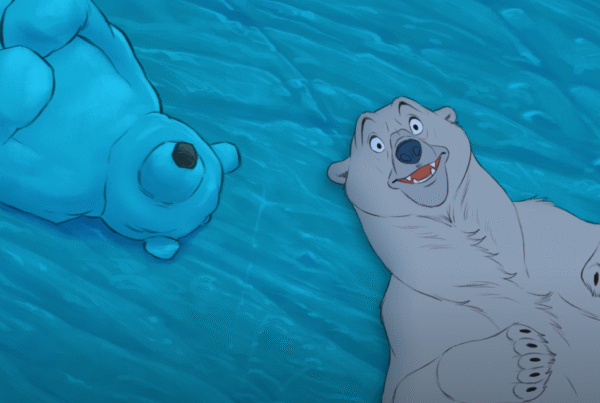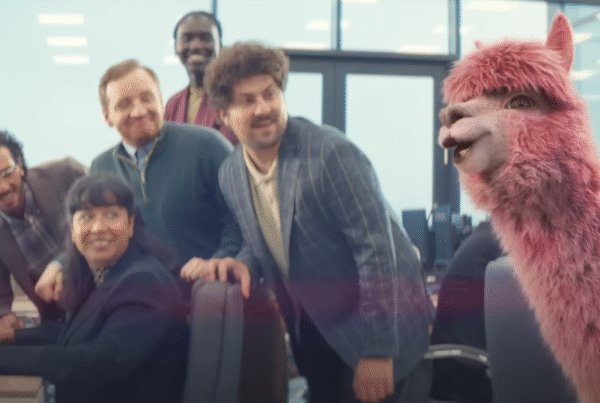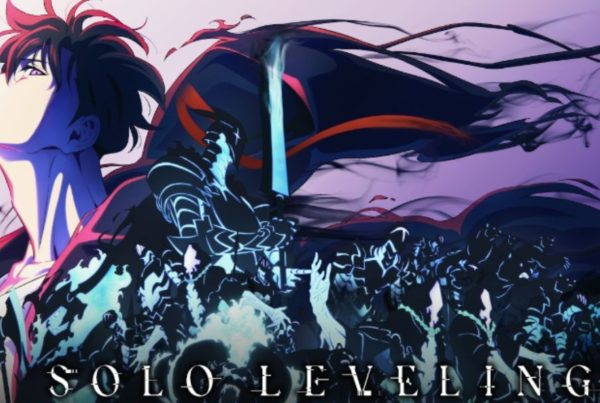Scoring 20 nominations and 6 awards – this masterpiece is none other than Chernobyl.
If you haven’t heard of it – you’re missing out on plenty.
 Source: Chernobyl
Source: Chernobyl
Released on May 6 this year, this hit miniseries took the world by storm – even receiving a 9.7 rating (out of 10) in IMDb’s all-time TV rankings just days after its completion.
Although Chernobyl’s been dethroned – it currently sits at third position with a 9.5 rating – its rapid ascent to the top indicates that it did many things right. Putting its superb plot aside for now, Chernobyl’s attention to factual detail, set design and believable characters were also essential factors contributing to its success.
Now, let’s take a closer look at Chernobyl and examine the factors behind its meteoric rise to fame.
What is Chernobyl about?
 Source: Chernobyl (2019)
Source: Chernobyl (2019)
Chernobyl is a historical drama television miniseries that takes a magnifying glass to the Chernobyl disaster in April 1986.
Now, let’s give a round of applause to the team behind Chernobyl – their talented casting and filming crew, film editors, sound designers, production designers… the list is basically endless.
But if you really go into the filmmaking of Chernobyl – the person we should really be giving credit to is Mazin. Without him and his pitch to HBO (with the help of executive producer Carolyn Strauss) – it wouldn’t have been possible.
 Source: Remembering the Impact of Chernobyl, 33 Years Later
Source: Remembering the Impact of Chernobyl, 33 Years Later
Mazin poured in two and a half years of effort – researching, preparing and structuring – amidst all his other films, shows and his own personal life as a father and husband.
He was committed to the point that he would turn down other assignments just to gain more time in putting together Chernobyl. All his dedication was all for getting the story out – the real truth among all the lies.
 Source: Still of Laurence Spellman in Chernobyl (2019)
Source: Still of Laurence Spellman in Chernobyl (2019)
Chernobyl is a story about humanity: the search for the culprit behind the disaster, the brave responders who died first in combat and, the drastic change in the lives of everyday citizens. Mazin was determined to show what exactly went wrong at the nuclear plant; the one which powered about 10 percent of Soviet Ukraine back in the 1980s.
The limited series centres around these main characters – nuclear physicist Ulana Khomyuk (Emily Watson), Soviet Deputy Prime Minister Boris Shcherbina (Stellan Skarsgård) and of course, the noble chemist, Valery Legasov (Jared Harris).
 Source: Jessie Buckley in Chernobyl (2019)
Source: Jessie Buckley in Chernobyl (2019)
However, the story about Lyudmilla Ignatenko (Jessie Buckley), the wife of a firefighter during the explosion was also worth mentioning for shedding light on the impact of the nuclear plant on citizens.
The history of Chernobyl
Most people in this generation will only know of Chernobyl as a hit tv miniseries – not as a devastating accident that claimed hundreds of life.
But as they say, fiction has its roots in fact and Chernobyl was based on a true story.
On the 26th of April, 1986, the worst nuclear disaster in history took place in the city of Pripyat in Northern Ukraine.
What happened?
 Source: Chernobyl (2019)
Source: Chernobyl (2019)
On April 26 1986, workers were doing the usual safety routine check-up on the reactor – testing if the fission reactor could still be cooled down even when the plant lost power.
However, workers went against safety protocol – by turning off critical control systems before testing the electrical systems.
Attempts were made to turn off the reactor completely, but a power surge resulted in a chain reaction of explosions within the plant. Eventually, the nuclear plant itself was exposed to open air, expelling radioactive material – toxic fumes and dust into the vicinity.
Firefighters immediately entered the catastrophic scene and tirelessly attempted to put out the wild blazes. While their cleanup efforts were praiseworthy – the accident would continue to affect Ukrainians for decades to come.
The aftermath
 Source: Adam Nagaitis in Chernobyl (2019)
Source: Adam Nagaitis in Chernobyl (2019)
The initial explosion killed 2, but about 54 deaths were confirmed in the immediate aftermath – with 52 of them caused by burns and severe radiation damage.
The environment itself took a huge hit – many trees sitting near the power plant withered and died due to high levels of radiation.
The nuclear accident itself was so disastrous that even after 30 years, scientists estimated that the area surrounding the former plant would be inhabitable for the next 20,000 years.
Forming the aesthetic of the series
Chernobyl’s plot may be fantastic – but its accurate grasp of the zeitgeist of the 80s, its recreation of past locations, and its brilliant choice of the cast was what made the series a masterpiece.
Here’s where Luke Hull – the production designer of Chernobyl steps in to explain how they did the entire series from top to bottom.
Old photos played a huge role in putting together the entire look of the series.
 Source: 1986 Chernobyl Disaster
Source: 1986 Chernobyl Disaster
To start off, there were two key influences – real-life photos of the plant in the Siberian town of Norilsk, and Come and See, a 1985 Russian film about Byelorussia in World War II which contributed to how Chernobyl turned out.
 Source: GIPHY
Source: GIPHY
This was supplemented with work from Gerd Ludwig – a photographer who snapped photos of the aftermath – and images from Alexander Gronsky – who featured brilliant Russian landscape photography playing up their abandoned and quiet qualities.
The astute viewer will also have observed significant overexposure and there was a sickly green tint in most scenes- there’s a reason behind that.
 Source: Chernobyl (2019)
Source: Chernobyl (2019)
Hull, Mazin and John Renck (director) pointed out that interiors during the 80s in the Soviet period gave off a sombre feeling – depicting insufficient electricity.
The trio made sure to use fluorescent lamps whenever applicable, even avoiding shade and bulbs to achieve a harsher, delicate look. At the same time, the team threw in a combination of orange and green lighting while designing the power plant so they contrasted greatly with the blazing fire after the explosion.
The elaborate planning, precise details and undying dedication of the entire crew were able to bring the aesthetics of the series to fruition. It’s no wonder that even the Russians themselves were amazed.
Casting crew resemblance: One and the same
We know – Chernobyl successfully brought you back in time while you were watching it. It’s as if you were there in person, right?
But their efforts went beyond that.
Here’s a comparison of the actual people involved in the incident with the cast:
Jared Harris Vs Valery Legasov
 Source: Jared Harris in Chernobyl (2019)
Source: Jared Harris in Chernobyl (2019)
Source: Characters / Chernobyl
Jared Harris looks familiar, right? Well, with a little bit of googling – you’ll realise that he also appeared in Mad Men as Lane Pryce and King George VI in The Crown!
On the other hand, you might not know the person he played in the series. Valery Legasov was the physical chemist who helped to identify the cause for the accident.
Jessie Buckley Vs Lyudmilla Ignatenko
 Source: Image
Source: Image
Source: Characters / Chernobyl
A fan of the BBC talent show, ‘I’d Do Anything’? Then you would have probably heard of Jessie Buckley – she placed second in the 2008 programme!
Lyudmilla Ignatenko is none other than the wife of Vasily Ignantenko – the Soviet firefighter who braved the ferocious flames after the explosion happened.
Stellan Skarsgård Vs Boris Shcherbina
 Source: Stellan Skarsgård in Chernobyl (2019)
Source: Stellan Skarsgård in Chernobyl (2019)
Source: Boris Scherbina
Remember Will Turner in Pirates of the Caribbean? Stellan Skarsgård is the man behind “Bootstrap” Bill Turner in the Pirates of the Caribbean movie! Prepare to watch him display another brilliant performance once again on the big screen in Chernobyl.
A rank above Legasov, Boris Shcherbina was a Deputy Prime Minister in the Soviet Union who headed the special commission leading the investigation of the disaster.
The set-up
The trio – Mazin, Hull and Renck weren’t the only ones putting in all the effort.
Chernobyl’s production team deserved much credit too for the set-up. After watching substantial video footage of the incident – they headed out to put together the layout for filming.
 Source: Image
Source: Image
From scouring Ukraine and Lithuania for quality props and original period costumes to trawling through Ukrainian eBay and Saturday markets in the capital city of Kyiv in search for polyester clothing, old plates and ashtrays; tons of work was put in.
Even the wardrobe department had to pitch in by scanning through warehouses from Prague to Kiev to acquire Soviet-era clothing.
In fact, they went as far as to use old fabric found in Belarus to create costumes. Think back to all the radiological gear and dosimeters that you saw? Those were custom-made just for the shoot.
Now that we’ve raised procurement of props, materials and clothing as a topic – we’re going to dive into arrangement and positioning as well!
 Source: Chernobyl
Source: Chernobyl
In Bryukhanov’s office, you probably spotted a huge carpet mural; it was a unique abstract painting specially designed to represent the propaganda pieces floating around during the time and, of course, the damaged power plant.
Now, that’s just the tip of the iceberg – it’s also a hint at the ‘maze’ motif which recurs throughout various episodes, reflecting both the fear and the chaos.
Take the stairs and endless corridors within the power plant for instance; while it’s an accurate enactment of the actual scene – it’s really the sense of entrapment that steals the limelight.
 Source: Sam Troughton and Robert Emms in Chernobyl (2019)
Source: Sam Troughton and Robert Emms in Chernobyl (2019)
This allusion was seen once more when divers were ordered to enter the plant’s basement to put an end to a second explosion. During this scene, nothing but pipes – a bit like the Windows 98 screensaver – were used to show the terror.
Bottom line
Chernobyl is a work of art. Sensational films like this don’t drop from the sky – research, time and legwork are all necessary to make a documentary sing.
It’s the same for animated video production.
Be it in motion graphics, 2D animation or even 3D animation, a solid concept and a lot of research is necessary to create a piece of work with soul. The best art is fraught with tension – they at once embrace reality – and reject that which they reflect. A series of tongue-in-cheek references drawn together by a strong concept to convey a certain message will always do much better than a bunch of over-the-top effects hastily cobbled together from different AE templates.
So there you go – stay true to the spirit of your work – like in Chernobyl, and good things should follow!




